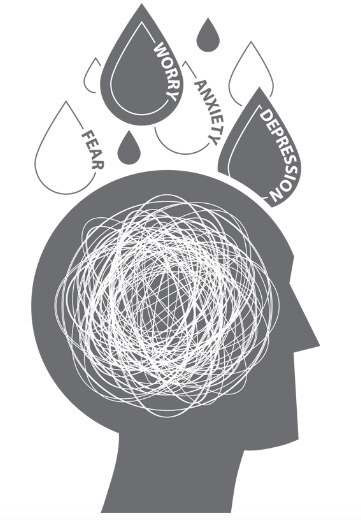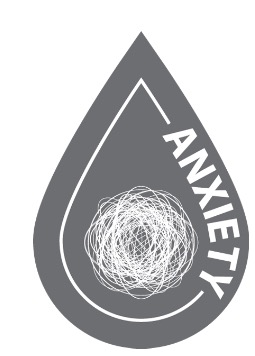“Fear is the path to the Dark Side.”
– Yoda (from the movie, Star Wars)

“Fear leads to anger. Anger leads to hate. Hate leads to suffering.” These are the words spoken by Yoda when training Luke Skywalker on the lessons of becoming a Jedi warrior. Fear also leads to worry. When fear and worry combine it leads to anxiety. Anxiety leads to depression. Yoda was correct. Fear, worry and anxiety bring the darkness of suffering and depression.
Let’s take a closer look at how this all works:
 Fear
Fear
Fear is a distressing emotion caused by apparent danger, pain, harm, or evil, whether the threat is real or imagined. It is the unpleasant feeling you have when you think you are in danger. In the beginning of life, a baby has no fears. Fears are learned over time. Common fears for a baby include being hungry, cold, or alone. Fears for toddlers are more developed and include darkness, monsters, costumes, bad dreams, strangers, etc. Once a fear is learned, it can be easily reawakened when it is triggered by the memory of the fear. When fear is learned, the signals of fear activate worry.

Worry
Worry is to think about problems or fears, to feel or show fear and concern because you think something bad is going to happen. Worrying focuses on what could happen, not what is happening. Worry allows your mind to dwell on fear. If left unchallenged, worry gives way to anxiety. Worry can lead to a state of anxiety and uncertainty over actual or potential problems.
 Anxiety
Anxiety
Anxiety is a feeling of worry, created by fear, typically about an imminent event or danger with an uncertain outcome. It is the child of the parents, fear and worry. The problem is that, by the time fears and worries have changed into anxiety, it has become a nervous disorder characterized by a state of excessive uneasiness and apprehension, typically with compulsive behavior or panic attacks.
When anxiety has a chance to grow and develop over a period of time, it can lead to depression.
Depression is a common and serious medical illness that negatively affects how you feel, the way you think and
how you act. Fortunately, it is also treatable. Depression causes feelings of sadness and/or a loss of interest in activities once enjoyed. It can lead to a variety of emotional and physical problems and can decrease a person’s ability to function at work and at home. (American Psychiatric Association)

Anxiety Is a Merry-Go-Round
Fear, worry, anxiety and depression are like a merry-go -round. The cycle repeats itself and goes around and around and around. You unconsciously choose to get on, but you can also choose to get off. In order to get off, you must make a conscious decision to change your thinking and behavior so that you do not repeat the cycle.
The best way to do this is to replace the negative with the positive. Instead of thinking what bad things could happen, think about the good things that could happen in your life. As soon as negative thoughts are replaced with positive thoughts, the cycle breaks down.
The three key factors to good anxiety management are:
- Self-Control
- Stress Management
- Physical Wellness
You can learn more about these factors and how to improve them in your life.
Want to learn more about changing your thinking and behaviors related to anxiety management? Contact us today for a free webinar on our Anxiety Management Program. Learn more about this program in the brochure here.
